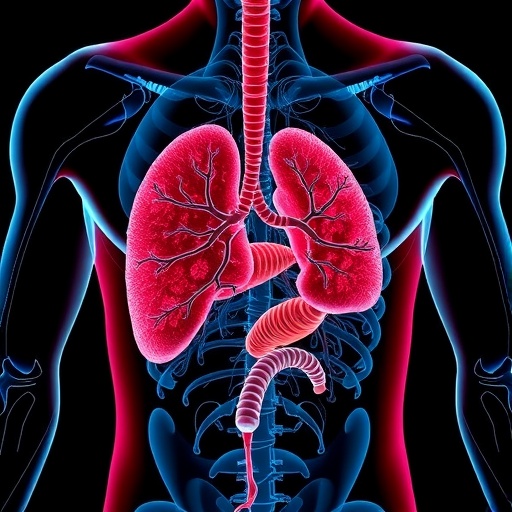In a pioneering study poised to redefine the therapeutic landscape for metabolic diseases, researchers have unveiled the transformative potential of dual agonism targeting GLP-1R and GCGR receptors. This innovative approach, detailed in a recent publication in Nature Communications, demonstrates how simultaneous activation of these receptors can effectively dissipate hepatic steatosis, enhance insulin sensitivity, and restore pancreatic β-cell function in obese male mice. As the global incidence of obesity and its cardinal complications such as type 2 diabetes continues to surge, these findings herald a significant breakthrough in addressing the intricate molecular underpinnings of metabolic dysfunction.
The study focuses on two pivotal receptors involved in glucose and energy homeostasis: the glucagon-like peptide-1 receptor (GLP-1R) and the glucagon receptor (GCGR). GLP-1R agonists have been extensively studied and applied clinically due to their capacity to augment insulin secretion, suppress appetite, and improve glycemic control. Conversely, the GCGR primarily modulates glucose production by the liver and has been associated with catabolic effects that elevate blood glucose levels. Traditional views cast GCGR activation as deleterious in diabetic contexts; however, the dual agonist approach disrupts this paradigm by harnessing GCGR’s metabolic consequences alongside GLP-1R’s beneficial effects to synergistically restore metabolic equilibrium.
The core pathological feature addressed in this research is hepatic steatosis, commonly referred to as fatty liver disease, which is characterized by excessive accumulation of triglycerides in hepatocytes. This lipid overload detrimentally impacts liver function and precipitates insulin resistance, a hallmark of type 2 diabetes. The investigators employed a sophisticated GLP-1R/GCGR dual agonist compound administered chronically to a cohort of diet-induced obese male mice exhibiting pronounced hepatic steatosis and insulin resistance. Results revealed a substantial reduction in liver fat content, accompanied by enhanced insulin signaling pathways, thereby reversing metabolic impairments previously entrenched in the animal model.
Significantly, the study delves into the mechanistic intricacies underlying the observed metabolic benefits. Dual receptor activation was found to promote enhanced mitochondrial biogenesis and fatty acid oxidation within hepatic tissue, processes imperative for efficient lipid catabolism and energy expenditure. This shift in hepatic metabolic programming alleviates lipid accumulation and combats oxidative stress, cumulatively restoring organ function. Parallel assessments of pancreatic β-cells revealed improved secretory capacity and β-cell survival, suggesting that systemic metabolic inflammation and dysfunction were mitigated by the therapeutic intervention.
This dual agonism strategy surmounts the limitations inherent in monotherapy approaches, which often yield incomplete metabolic corrections or undesired side effects related to receptor-specific signaling. By finely tuning agonist activity at both GLP-1R and GCGR, the treatment fosters a holistic restoration of glucose and lipid homeostasis. These findings may propel the design of next-generation peptide therapeutics possessing enhanced efficacy and an improved safety profile tailored for obese patients with comorbid diabetes and non-alcoholic fatty liver disease (NAFLD).
Further enhancing the translational appeal of this research is the robust experimental methodology employed, which integrates cutting-edge techniques such as hyperinsulinemic-euglycemic clamp studies for precise insulin sensitivity measurement, histological analyses for liver morphology assessment, and transcriptomic profiling to elucidate gene regulatory networks influenced by dual agonism. This comprehensive investigative framework provides compelling evidence that interlinked metabolic pathways can be recalibrated pharmacologically to induce durable physiological benefits.
Moreover, the study’s focus on pancreatic β-cell rescue addresses a critical aspect of diabetes pathogenesis often overlooked in peripheral insulin sensitivity interventions. β-cell dysfunction underlies the progressive nature of type 2 diabetes and is exacerbated by glucolipotoxicity—a state induced by chronic hyperglycemia and fatty acid excess. Dual GLP-1R/GCGR agonists mitigate these deleterious effects by enhancing insulin gene expression and promoting cellular resilience, thus potentially delaying or preventing disease progression.
From a therapeutic development standpoint, this research invigorates efforts toward multi-target pharmacotherapy in metabolic diseases, challenging the conventional single-target dogma. By exploiting receptor crosstalk and metabolic flexibility, the study underscores the value of sophisticated molecular designs that engage endogenous signaling networks to achieve superior clinical outcomes. Continued refinement of dual agonists may include optimization of receptor binding affinities, peptide stability, and tissue-selective targeting to further maximize therapeutic indices.
Importantly, while the current study centers on obese male mice, the translational implications for human treatment are profound. Obesity-related insulin resistance and NAFLD constitute a global health crisis, and treatment modalities capable of addressing the triad of obesity, liver fat accumulation, and β-cell failure simultaneously could revolutionize disease management. Nonetheless, rigorous clinical trials will be essential to verify safety, dosage paradigms, and long-term efficacy in diverse human populations.
The researchers also highlight that dual GLP-1R/GCGR agonists may offer metabolic advantages beyond glycemic control, including weight loss and lipid profile improvements, owing to enhanced energy expenditure and appetite modulation inherent to receptor activation. Collectively, these systemic effects could reduce cardiovascular risks prevalent in diabetic and obese cohorts, offering a multipronged therapeutic arsenal within a single pharmacological agent.
This seminal work opens avenues for investigating combinatorial receptor targeting in other chronic metabolic disorders, potentially extending into areas such as non-alcoholic steatohepatitis (NASH), metabolic syndrome, and even age-related metabolic decline. Novel dual agonist molecules with tailored pharmacodynamics could serve as prototypes for future drug development pipelines aiming to harness integrated metabolic regulation.
In conclusion, the elucidation of how GLP-1R/GCGR dual agonism disrupts the vicious cycle of hepatic steatosis, insulin resistance, and β-cell dysfunction marks a milestone in metabolic disease research. By disentangling complex receptor-mediated pathways and leveraging synergistic signaling for therapeutic gain, this approach exemplifies the future of precision medicine in endocrinology. As the scientific community moves forward, this dual agonist paradigm promises to shift clinical practices and improve patient outcomes in an era burdened by rising metabolic disorders worldwide.
Subject of Research:
The metabolic effects of GLP-1R and GCGR dual agonism on hepatic steatosis, insulin sensitivity, and pancreatic β-cell function in obesity-induced models.
Article Title:
GLP-1R/GCGR dual agonism dissipates hepatic steatosis to restore insulin sensitivity and rescue pancreatic β-cell function in obese male mice.
Article References:
Laker, R.C., Egolf, S., Will, S. et al. GLP-1R/GCGR dual agonism dissipates hepatic steatosis to restore insulin sensitivity and rescue pancreatic β-cell function in obese male mice.
Nat Commun 16, 4714 (2025). https://doi.org/10.1038/s41467-025-59773-4
Image Credits: AI Generated




